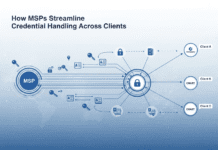In today’s global economy, businesses rely on efficient and cost-effective shipping methods to maintain their competitive edge. One such method is Less-than-Truckload (LTL) freight shipping, which allows companies to ship smaller amounts of freight without needing to fill an entire truck. Optimizing LTL freight shipping can significantly reduce costs, improve delivery times, and enhance customer satisfaction. This blog explores key strategies businesses can adopt to make the most of LTL shipping.
1. Understand the Basics of LTL Freight Shipping
Before diving into optimization strategies, it’s essential to understand how LTL freight shipping works. LTL shipping involves combining shipments from multiple customers into a single truck. Each shipper pays for the space their cargo occupies, making it a cost-effective option for businesses that don’t need to ship full truckloads. This model benefits companies by reducing shipping costs, minimizing waste, and lowering environmental impact. Incorporating Shipley LTL freight shipping services into your logistics strategy can significantly enhance efficiency and cost-effectiveness in your shipping operations.
2. Choose the Right Carrier
Selecting the right LTL carrier is critical for ensuring reliable and timely deliveries. Different carriers may specialize in specific routes or types of freight, so it’s important to partner with one that aligns with your business needs. Consider factors like pricing, coverage, and service levels when evaluating carriers. It’s also helpful to look for carriers that offer advanced tracking systems and customer support to enhance transparency and communication.
3. Consolidate Shipments for Maximum Efficiency
One of the key ways to optimize LTL freight shipping is by consolidating shipments. Rather than sending multiple small shipments on different days, businesses can bundle orders together to create larger, more efficient loads. This not only reduces shipping costs but also minimizes handling and the risk of damage. Working closely with suppliers and customers to schedule shipments can make consolidation more effective.
4. Leverage Technology for Better Freight Management
Modern technology offers powerful tools for managing LTL freight shipping more efficiently. Transport Management Systems (TMS) enable businesses to compare carrier rates, track shipments in real time, and optimize routing. Additionally, data analytics can help identify patterns and inefficiencies in shipping operations, allowing companies to make informed decisions about how to improve processes. Automating documentation, like bills of lading and invoices, also helps streamline shipping operations.
5. Optimize Packaging to Reduce Costs
The way goods are packaged can have a significant impact on the cost of LTL shipping. Efficient packaging reduces the amount of space taken up in a truck, meaning lower shipping costs. Invest in high-quality, space-saving packaging materials and ensure your shipments are well-secured to prevent damage. Proper labeling also plays a role in avoiding delays and ensuring shipments arrive on time.
6. Focus on Customer Communication
Clear communication with customers is vital in optimizing LTL freight shipping. Providing accurate delivery estimates, offering tracking information, and being responsive to inquiries all contribute to a better customer experience. Additionally, ensuring that customers understand any shipping limitations or potential delays helps manage expectations and prevents issues that could arise from misunderstandings.
7. Plan for International Regulations and Customs
For businesses shipping globally, it’s important to plan for international regulations and customs clearance. Different countries have varying regulations that can affect shipping times and costs. Collaborating with a customs broker or freight forwarder can help ensure that your shipments meet all necessary requirements, preventing delays and extra fees.
8. Monitor and Adjust Shipping Strategies
Optimization is an ongoing process. Regularly reviewing shipping performance and costs is key to maintaining efficiency in LTL freight shipping. Monitor carrier performance, delivery times, and any issues that arise during shipping. Use this data to adjust strategies, negotiate better rates with carriers, or explore new routes that could save time and money.





